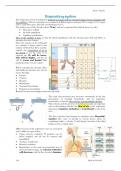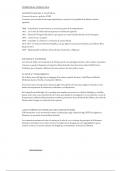Samenvatting
Summary Respiratory system
- Vak
- Instelling
Dive into the intricate workings of the respiratory system, where air meets blood for life-sustaining gas exchange. Discover how the lungs, with their vast surface area of alveoli, facilitate the exchange of oxygen and carbon dioxide. Explore the journey of air as it navigates through the larynx, t...
[Meer zien]






